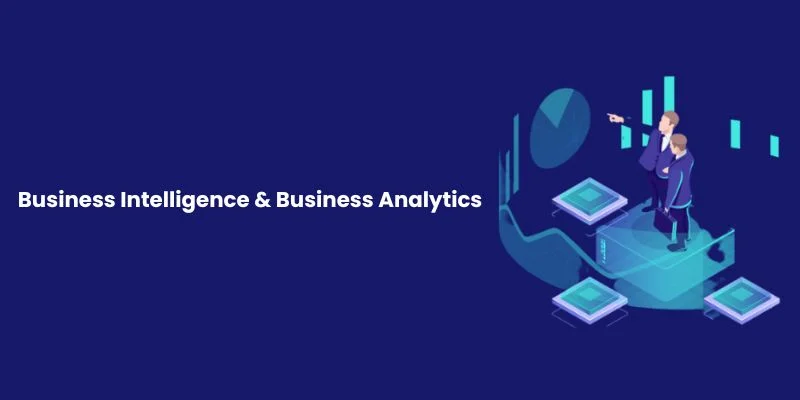
Your company generates an enormous volume of data every day. It would help if you had the techniques and resources to transform your data into valuable insights and make better decisions. What distinguishes them, though, and which one is best for your company’s requirements? Let’s start with a few basic definitions like what is Business Intelligence and Business Analytics before we explain the distinctions. Knowledge management tools like business intelligence (BI) and its subsets, data analytics and business analytics, are used to comprehend and generate insights from historical and current data. There are several leading Colleges specializing in MBA in Business Intelligence and Analytics Management. Though there are subtle differences between business analytics, data analytics, and BI, the phrases are frequently used interchangeably, which adds to the confusion.
Business Intelligence
An infrastructure known as business intelligence (BI) aids in gathering, storing, and analyzing data from company operations. Business Intelligence provides in-depth business measurements in almost real-time to aid in improved decision-making. With improved Business Intelligence Analytics, you may identify market trends, set performance goals, boost compliance, and enhance nearly every facet of your company’s operations.
Business Analytics
Business analytics (BA), a subset of BI, is collecting the raw data from your firm and using it to make predictions, find trends, and more. Several widely used approaches in business analytics include:
- Data mining: Data mining is sifting through vast amounts of data to find trends and patterns.
- Aggregation: Aggregation is the procedure used to collect and arrange data before it is analyzed.
- Forecasting: Forecasting is evaluating past data to project future results.
- Predictive modeling: This technique involves extracting information from data sets to find patterns and project future trends. There is a high demand for MBA Business Analytics in Chennai.
- Data visualization: It’s like painting a picture with your data. You create charts, tables, or graphs that depict your data analysis and make it easier to understand and interpret.
Differences between Business Intelligence and Business Analytics
Let’s discuss the differences between Business Intelligence vs Business Analytics.
| Categories | Business Intelligence | Business Analytics |
| Key Characteristics |
|
|
| Usage |
|
|
| Focus and Objectives | Primarily concerned with what has happened and why, aiming to provide a clear picture of past and current performance. | Focused on what is likely to happen and what should be done, aiming to provide actionable insights for future strategies. |
| Tools and Techniques | Relies heavily on data warehousing, ETL (extract, transform, load) processes, and visualization tools. | Employs statistical analysis, predictive modeling, and optimization techniques, often requiring more specialized analytical tools and software. |
| Use Base | Typically used by a broader range of users within an organization, including executives, managers, and operations staff who need to monitor performance. | Generally used by data scientists, analysts, and other specialized roles focused on deep data analysis and strategic planning. |
Although Business Intelligence and Analytics are essential for making well-informed decisions, their functions are distinct. Whereas BA gives prescriptive and predictive insights that direct future activities and strategic planning, BI supplies the historical context and real-time monitoring required for operational efficiency. MBA Colleges in Chennai offer in-depth knowledge on Business Intelligence and Business Analytics.
